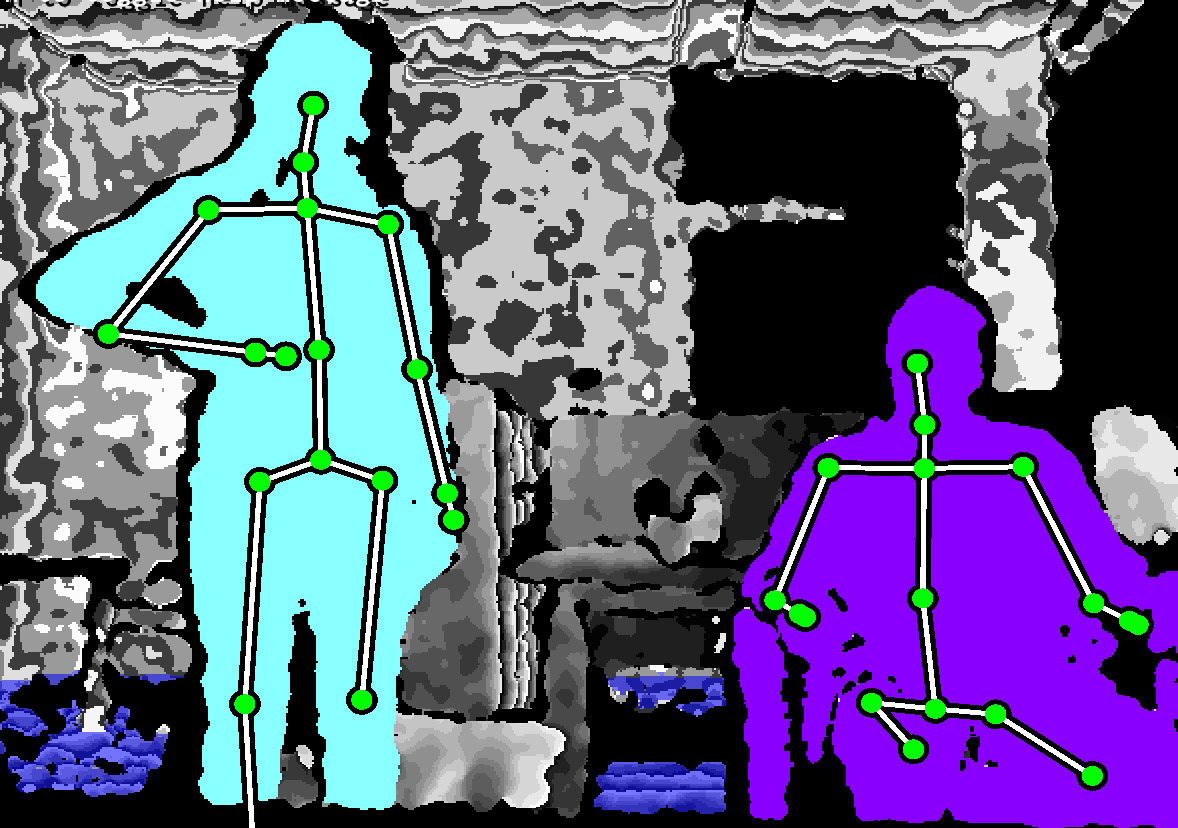Motion analysis generates valuable information about the activity behavior and execution of movements of humans as well as animals. This also includes algorithms that can be used to detect falls. Up to now, acceleration sensors attached to the joints have mainly been used for this purpose. These are uncomfortable to wear over the long term and can cause skin irritation, especially in older people after prolonged wear. Another solution is marker-based motion analysis using optical sensors. For this, corresponding markers are attached to the clothing and can be detected and tracked via a camera. While this method is also not completely contactless and is unusable for everyday use, artificial intelligence algorithms enable complete marker less optical motion analysis.
Deep neural networks can generate skeletal models by recognizing, associating, and tracking individuals and their joints and body parts. Fraunhofer IMS focuses on the following research questions, among others.
Optical gait analysis:
Using this movement data, gait parameters can be extracted to make an assessment of the risk of falls of elderly persons. Since small irregularities and deviations in the gait pattern are important here, the positions of the joints must be determined as accurately as possible. How accurately the measurements can be realized with a conventional RGB camera, a 3D depth camera and a combination of both is a current research topic at Fraunhofer IMS.
Motion analysis for activity detection:
In addition, skeletal models combined with other algorithms can provide information about a person's pose and posture. This is particularly useful for research on the automatic long-term assessment of health parameters, such as orthostatic intolerance. Here, simultaneous measurement of blood pressure and heart rate can be used to evaluate the autoregulatory power of the cardiovascular system during different activities.
Motion analysis for fall detection:
A detection and classification of different poses is also relevant for other application areas. Another related research topic in the field of home care and geriatrics is fall detection. Basing on pose and activity recognition it can be evaluated whether a transition between poses was normal and intentional or whether it was a fall. In addition, Fraunhofer IMS is working on detecting falls before they happen. By analyzing fall risks, drastic health damage and subsequent costs can thus be prevented.

